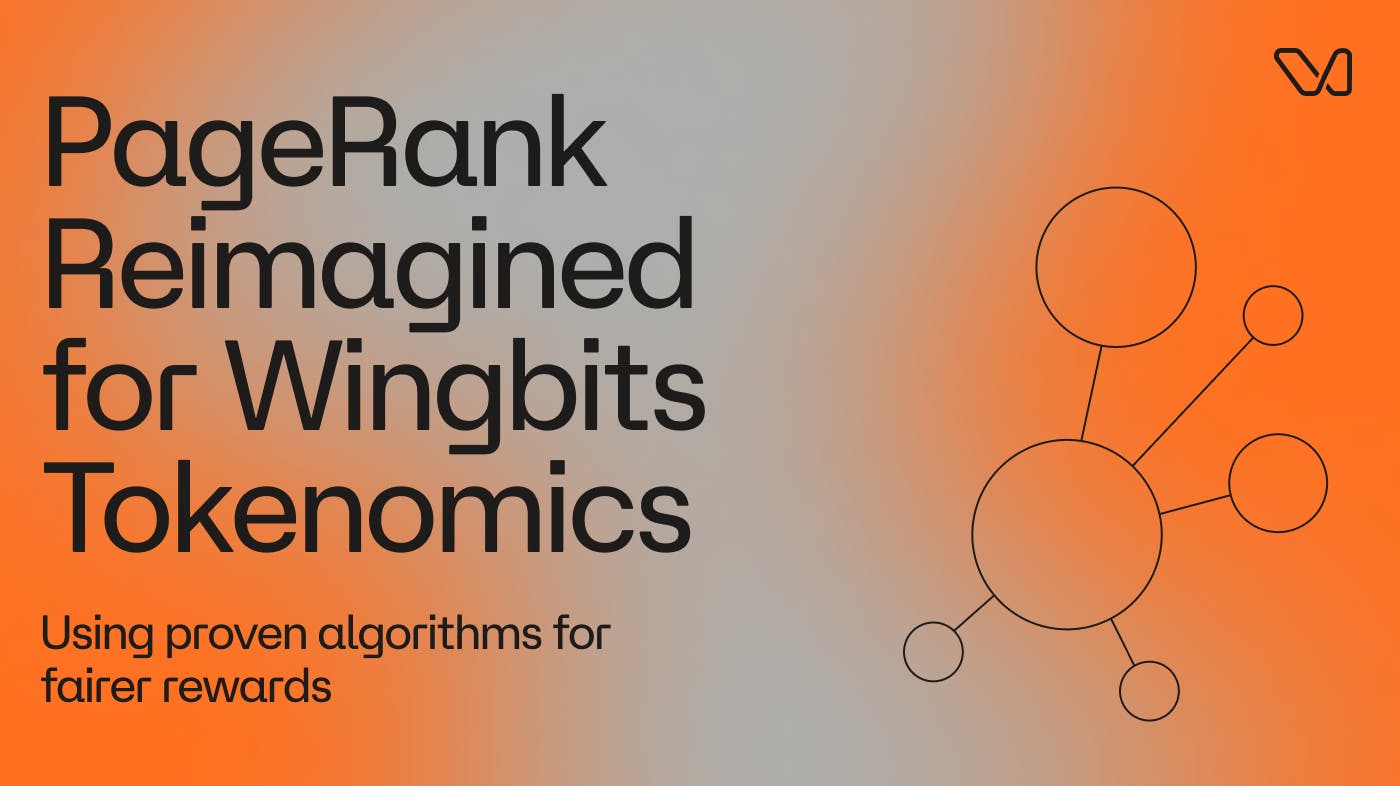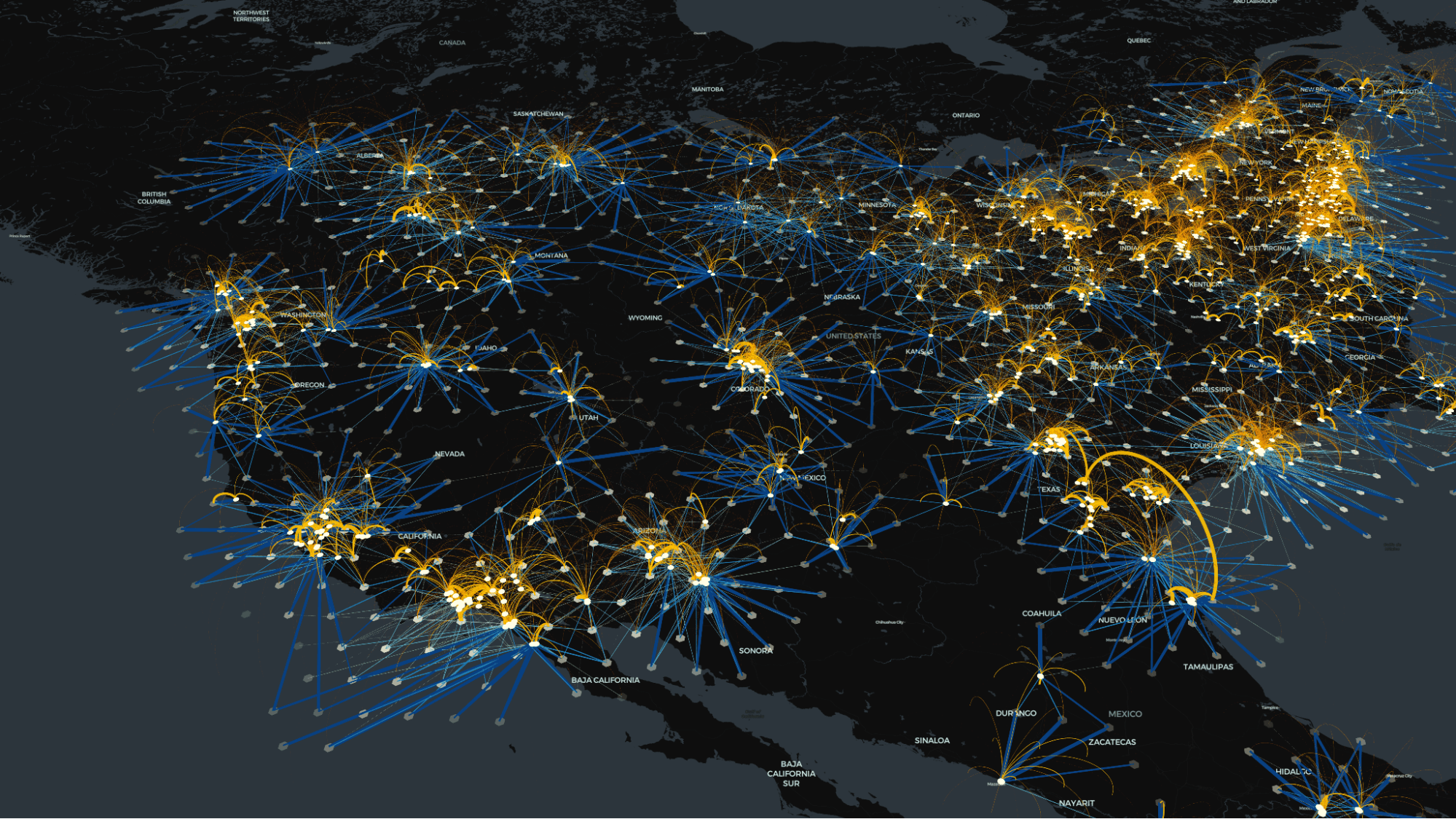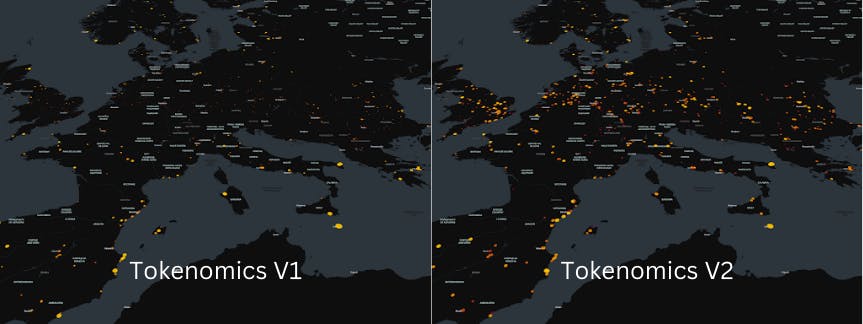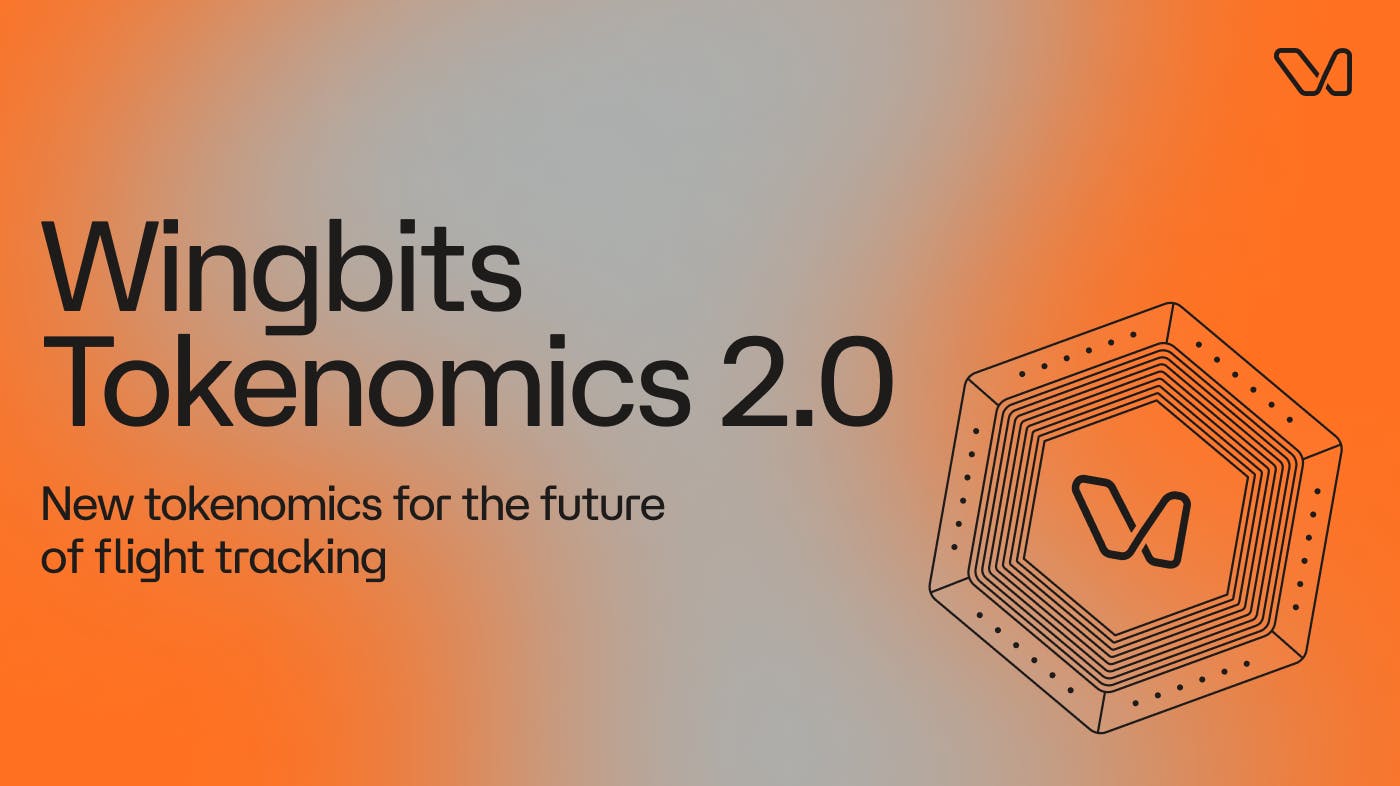PageRank Reimagined: Equitable Rewards for ADS-B Data Contributors
Wingbits
March 13, ‘25

Calling all aviation data enthusiasts and flight trackers! If you want to uncover how at Wingbits we value ADS-B data contributions in our fast-growing network, it’s time to look at this PageRank inspired algorithm. We designed it to unravel the complexities of our vast airspace and reveal the true worth of each data point in our interconnected web of receivers.
ADS-B messages are transmitted by aircraft and intercepted by ground stations, with varying levels of efficiency. The current reward mechanism, though, presents a significant challenge: a small fraction of high-performing stations would receive a disproportionate share of the allocated tokens, leaving insufficient rewards for the majority of contributors. Indeed, we observed that the top 10% of stations were poised to accumulate approximately 60% of the daily token distribution. This imbalance threatens to undermine the network’s collaborative nature and could potentially discourage widespread participation.
In this post, we’ll explore how to fix this by implementing a fair reward system in our decentralized flight tracking community. How does it work? Buckle up and prepare for takeoff as we dive into the world of equitable data contribution rewards!
The Wingbits Network
The Wingbits network is built upon three fundamental components: stations, hexes and the relative amount of data they exchange. Hexes serve as the source for valuable ADS-B messages, while stations act as the receivers of this data. The network’s complexity arises from the interplay between these elements, where multiple stations may cover the same hex with different performance or - conversely - a single station may cover multiple hexes with varying amounts of received messages for each.
To accurately assess the value of each component within the network, a two-step evaluation process is necessary:
1. Analyze the local data distribution patterns for both stations and hexes independently.
2. Combine these analyses to calculate a global score for each station and hex.
This approach allows for a detailed understanding of the network’s structure and the relative importance of its constituent parts. Enter the Attention Network and the Coverage Network:
Attention is what you need
One type of vertex in the Wingbits Network is the station-vertex (represented with white circles in the figure below): these are the devices strategically placed to capture ADS-B messages. The Attention Network is a graph where links originate from stations and target nearby hexes.

The weights on the links (the arcs in the figure) are given by the ratio of messages captured in the target hex to the total messages captured by the station. It is a way of quantifying the “attention” each station is paying to the different hexes.
Coverage is how you succeed
The other type of vertex in the Wingbits Network is the hex-vertex (shown in the figure below as a constellation of hexagons): these are the spatial units that we use to aggregate data in different regions of interest. The Coverage Network is a graph where links originate from the hexes and target nearby stations.

The weights on the links (the blue lines in the figure) are given by the ratio of messages captured by the target station to the total messages captured in the same hex by all the stations covering it.
In the Attention Network the weighted links are directed from the station-vertices to the hex-vertices, while in the Coverage Network the links are directed in the opposite direction, from hexes to stations. The full Wingbits Network is simply the superposition of the Attention and of the Coverage networks (see the figure below).

Attention and Coverage networks combined to make the full Wingbits network.
PageRank centrality: the Google algorithm
PageRank centrality, originally invented by Google founders Larry Page and Sergei Brin for ranking web content, can be adapted to analyze the importance (this is what is meant by centrality) of vertices in the Wingbits Network. This approach is particularly useful for our bipartite network structure, consisting of station- and hex- vertices with weighted directional links representing ADS-B message exchanges.
Similarly to the web, each vertex (whether a station or a hex) is assigned a score by the PageRank algorithm based on the number of incoming links it receives and on their weights. Moreover, during the PageRank iterative calculation, the strength of connections is dynamically adjusted: it increases or decreases depending on the relative score of the vertex from which the link originates. This weighting system accounts for the directionality of data flow in our network: station-vertices have incoming links originating from hex-vertices (the “coverage” information for that station), while hex-vertices have incoming links originating from station-vertices (the “attention” that different antennas pay to that hex).
The result is that vertices receiving many highly weighted links become influential in the network. For instance, a station-vertex that consistently receives during the day a large share of messages from multiple aircraft (aggregated into hex-vertices) would have a higher PageRank. Similarly, a hex-vertex representing an area of airspace that frequently transmits the majority of messages received by multiple stations would also score high.
Importantly, vertices connected to these high-scoring vertices share in their influence, creating a cascading effect throughout the network. A station strategically positioned to receive data from high-traffic airspace, or a hex representing a critical air corridor, significantly elevates the scores of its connected vertices.
However, to prevent undue dominance of vertices localized in certain areas and ensure fair distribution of influence, we implement a normalization technique. Specifically, we adjust the weights on the links between vertices such that the sum of outgoing weights from any vertex equals 1. This normalization balances the network, allowing for a more equitable distribution of relevance while still recognizing the value of well-positioned or high-performing vertices. As a result, our adapted PageRank algorithm provides a balanced view of vertex importance, accounting for both the quantity and quality of connections in our ADS-B data collection network.
This approach allows us to rank stations and airspace sectors, providing valuable insights for network optimization and resource allocation.

A portion of the network with the stations’ relative scores (proportional to the radius of the circles).
Why this matters
Our analysis revealed a critical issue with the initial reward distribution logic: an excessive concentration of tokens among a small subset of stations (10% of the stations could take 60% of the daily rewards). This skewed allocation would leave an insufficient share for the vast majority of contributors, potentially undermining network growth and participant engagement.
With the inclusion of the PageRank in the new reward distribution formula each contributing station will receive a daily allocation of tokens proportional to its PageRank score. Moreover, to incentivize early adoption an Early Participation bonus will also be applied for the initial years of the network’s operation.
This reward mechanism offers several key advantages:
Fairness and Strategic Value: Rewards are distributed based not only on data volume but also on each station’s strategic importance within the network.
Network Optimization: By rewarding strategically placed stations, we encourage optimal network coverage. This incentivizes participants to identify and fill crucial gaps in our data collection grid.
Comprehensive Performance Evaluation: Our system considers both “attention” and “coverage”, providing a better assessment of each station’s overall contribution to the network.
Scalability and Adaptability: As the network grows, the PageRank algorithm naturally adjusts to reflect changing dynamics, ensuring the reward system remains relevant and fair over time.
This approach to rewards distribution aligns individual incentives with the overall goal of building a robust, efficient, and comprehensive ADS-B data collection network.

With the previous reward logic the token distribution was too concentrated, with the top 10% of stations earning 60% of a daily token distribution. Only a few stations earn enough to be visible in the above figure (the radius of the circle is proportional to the station’s rewards).
With the new reward logic tokens are distributed more fairly, with the top 10% of stations earning now 30% of a daily token distribution, with a bigger portion available to be distributed to the rest of the network. PageRank allows more stations to earn more tokens, as shown in the visualization above.
Conclusions
By adapting PageRank to our ADS-B data collection network, we've created an effective way of evaluating and rewarding stations performance. This approach ensures that our network continues to evolve and improve, ultimately leading to more comprehensive and reliable aircraft tracking data.
For station owners and hosts, this means that your rewards are based not just on how many messages you collect, but on how crucial your station is to the overall network. It's not just about quantity; it's about being in the right place at the right time.

Company
Wingbits is a DePIN (Decentralized Physical Infrastructure Network) that rewards community members with $WINGS tokens for monitoring aircraft in real-time using specialized ADS-B hardware. The network aligns incentives to compensate participants based on the quality and quantity of flight tracking data they contribute, creating a more equitable alternative to traditional tracking systems. By incentivizing strategic hardware placement and reliable uptime, Wingbits is building the world's largest and most secure flight tracking network while disrupting an industry that has relied on unpaid volunteers for decades.
Recommended articles
Introducing Wingbits Tokenomics 2.0
Ray Buckton
April 3, ‘25
